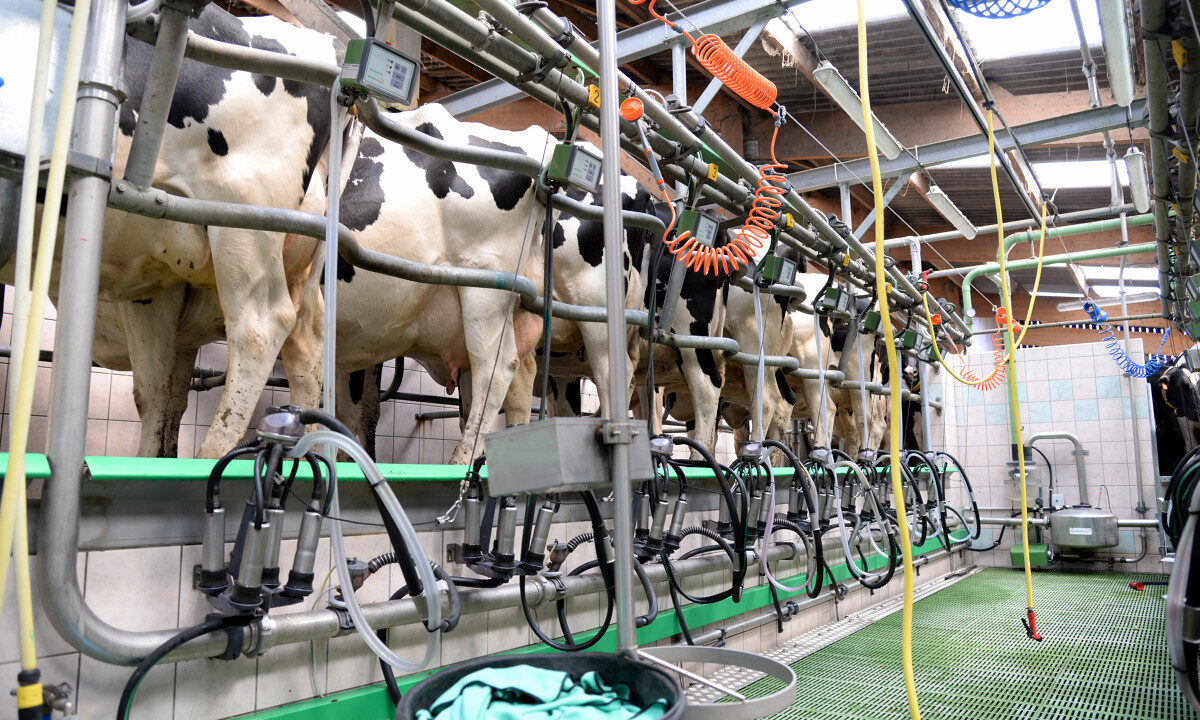The term 10 in 7 refers to milking cows 10 times over the course of seven days, instead of the traditional 14 times per week in the typical twice-a-day (TAD) Irish milking routine.
With labour becoming scarce and not many workers too fond of doing long hours milking cows, the 10 in 7 option might make the farm a more attractive place to work and a place that can retain staff that bit easier.
The 10 in 7 method has become more popular in recent years and is always discussed around this time of the year when cows are not milking as heavy and are coming to the end of their lactation.
As we progress into the autumn months and the latter end of the lactation for many herds around the country, farmers may be considering their milking options for next year.
Like once-a-day milking, 10 in 7 milking may be used on farms at this time of the year to get cows into good condition before drying-off.
There is no doubt that milking is the most labour-demanding task on Irish dairy farms and sets the structure of the working day, as everything revolves around milking and the end of the working day is largely dictated by morning and evening milking time.
10 in 7 milking
Altering your milking frequency could provide more flexibility, which will allow for a better work/life balance for yourself and your staff.
However, it is not as simple as merely changing over your milking frequency in the morning, as a number of factors must be considered before implementing a new strategy.
Factors like your herd’s milk production, cow health, and welfare must all be considered before making any alterations to your system.
A Teagasc Moorepark study investigated two different milking scenarios, where the first scenario involved milking 10 times in seven days for the full lactation.
The second scenario was milking TAD for the first half of the lactation and then switching to 10 in 7 in the second half of the lactation.
These two milking routines were then compared to a third option, which was the traditional milking interval in Ireland where cows were milking TAD for the full lactation.
Initial results showed that milking 10 in 7 for the full lactation reduced milk yield by 10% and milk solids yield by 11%.
The most interesting finding was that when cows were milking TAD for the first half of the lactation and switched to 10 in 7 halfway through, milk production was the same as milking TAD for the full lactation.
By switching halfway through, you are not only getting the same production, but also seeing positive effects in terms of saving on labour as well as water and electricity usage.
And of course the less stress and the less work the cows had to do through milking has a positive impact on cow condition, as it easier to build condition when cows are milked less frequently.
This also has a positive knock-on effect on the cows’ health and disease and infection resistance.
An example of a 10 in 7 milking schedule compared to TAD milking, is as follows:
Mon
Tues
Wed
Thurs
Fri
Sat
Sun
10 in 7
a.m
7
9
7
9
7
9
7
10 in 7
p.m
3
3
3
TAD
a.m
7
7
7
7
7
7
7
TAD
p.m
3
3
3
3
3
3
3
The table above is an example of how a 10 in 7 milking routine would be carried out at farm level. These milking frequencies ensure the best results for the system.
We know a change in milking frequency can help reduce labour on farms, but before you change anything, your herd’s somatic cell count (SCC) should be analysed.
Your herd’s SCC should be below 120,000 cells/ml consistently across the whole year in order to ensure a successful transition from TAD milking.
Cows are creatures of habit, so the initial changeover in milking times will cause additional stress in the first week or two, which will lead to an influx of white blood cells and a spike in SCC.
However, from data obtained in Teagasc Moorepark, 10 in 7 may be an option for the remaining few months of the year without having any serious impact on performance, but saving on labour and building condition and health of the cows ahead of drying off.
Changing milking intervals and times is only as good as the farm situation. Realistically, it is not going to suit a high producing pedigree Holstein Friesian herd producing over 10,000L but may suit a herd producing 4,000-6,000L, and maybe even more.

